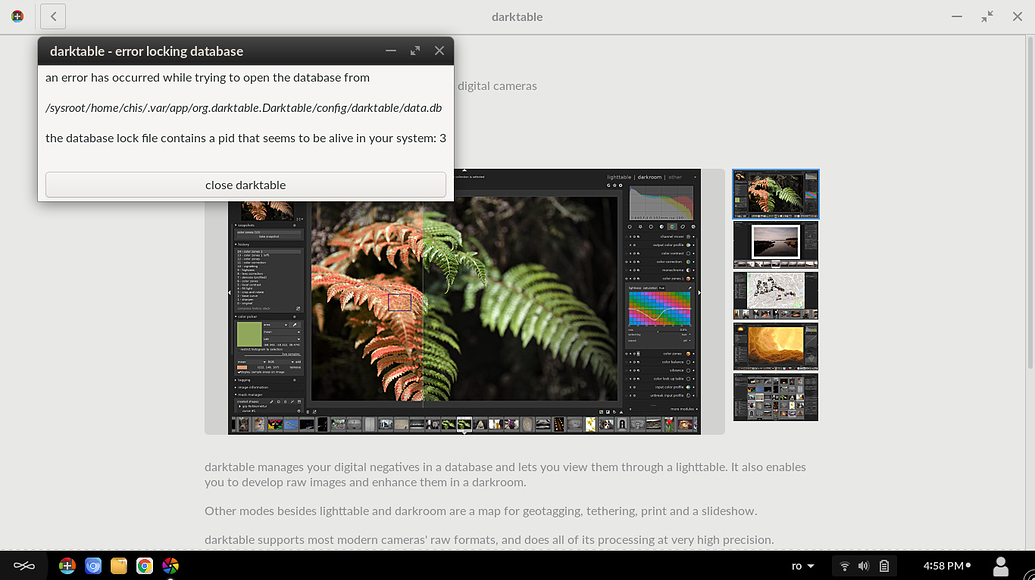

Once you save the Krita file, its output would be re-injected in darktable pipeline and allow you to finish the tone-mapping and stuff, export to your usual media and be done. The darktable Krita module would send its input to the base layer of a new Krita project (32 bits float linear REC2020), open Krita, allow you to add layers and paint. RAW -> WB + demosaicing + denosing -> input colour profile -> global colour adjustments -> -> filmic/base curve -> output colour profile My preliminary idea would be to add a Krita module in the darktable pipeline, before the non-linear adjustments, like that: I’m considering wiring Krita and darktable in a seamless way, kind of the same thing you would get with Photoshop and Lightroom, using Smart Objects and such. Its painting abilities are on-par with those of Photoshop or better (many options to create your own brushes + efficient UI), and far superior to those of Gimp (witness the settings layers, OCIO colour management, smart patch tool and the no-nonsense UI), but you also get a fully scene-linear 32 bits workflow.


I knew about Krita for a long time but just tested it recently. Also, I enjoy this kind of retouching much more than the sliders pushing process in dt (it’s more organic).

( example of stuff I did with darktable + PS). Layered painting options give a lot more freedom and fill the gap between painting and photography. There is still a thing I miss from Photoshop: its painting abilities, to do advanced skin retouch (airbrushed dodging and burning) and specific colour edits without all the burden of sliders and parameters tuning. The code need to be polished a bit more and I need to decide what to expose in the export UI or better simplify for the user.Since the retouch and liquify modules have been merged in darktable, I have not used Photoshop anymore to do my skin retouches, since it covers most of my needs. Joe Drago the author of libavif was very helpful explaining all the details and helping me in debugging issues. From RAW exported and reimported AVIF images in darktable.įor implementing AVIF support I used libavif. Now I nearly finished my first feature for darktable, support for the AVIF image format. I think it is the best tool out there for editing RAW images.įrom time to time I contributed small code changes to darktable, mostly bug fixes. As I’m an amateur photographer, I’m using Open Source tools for developing my images.


 0 kommentar(er)
0 kommentar(er)
